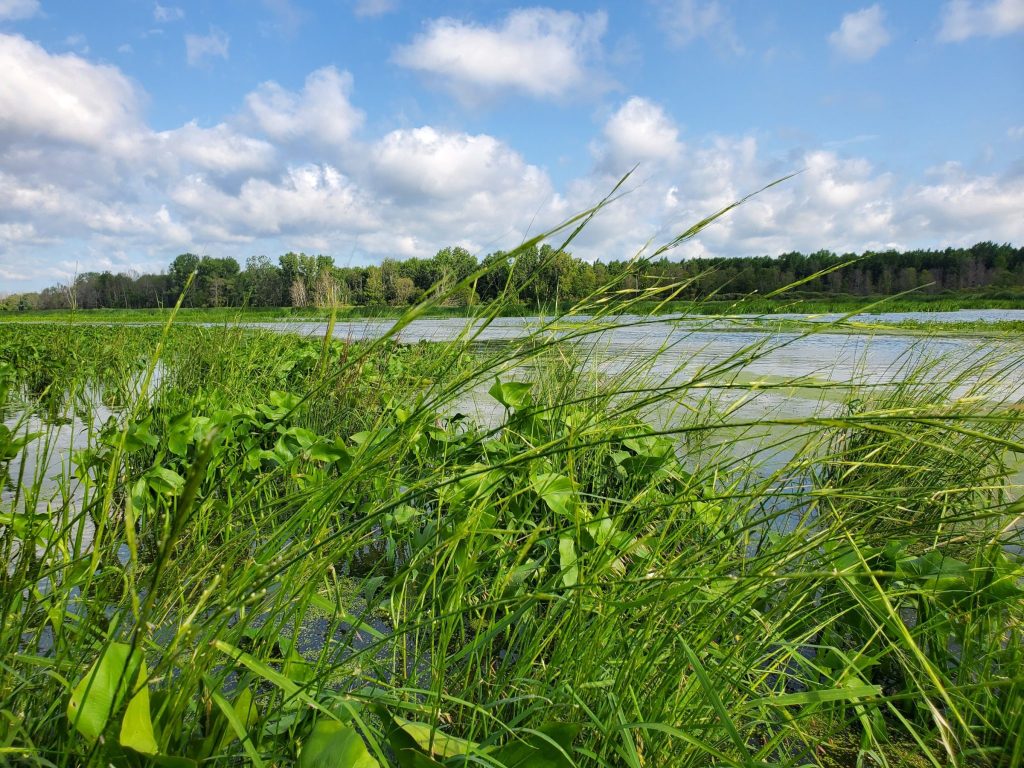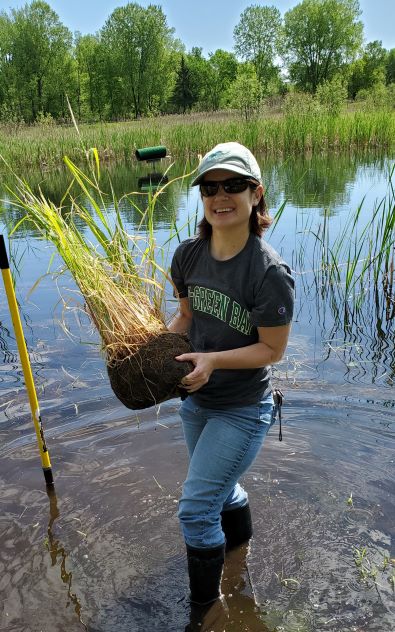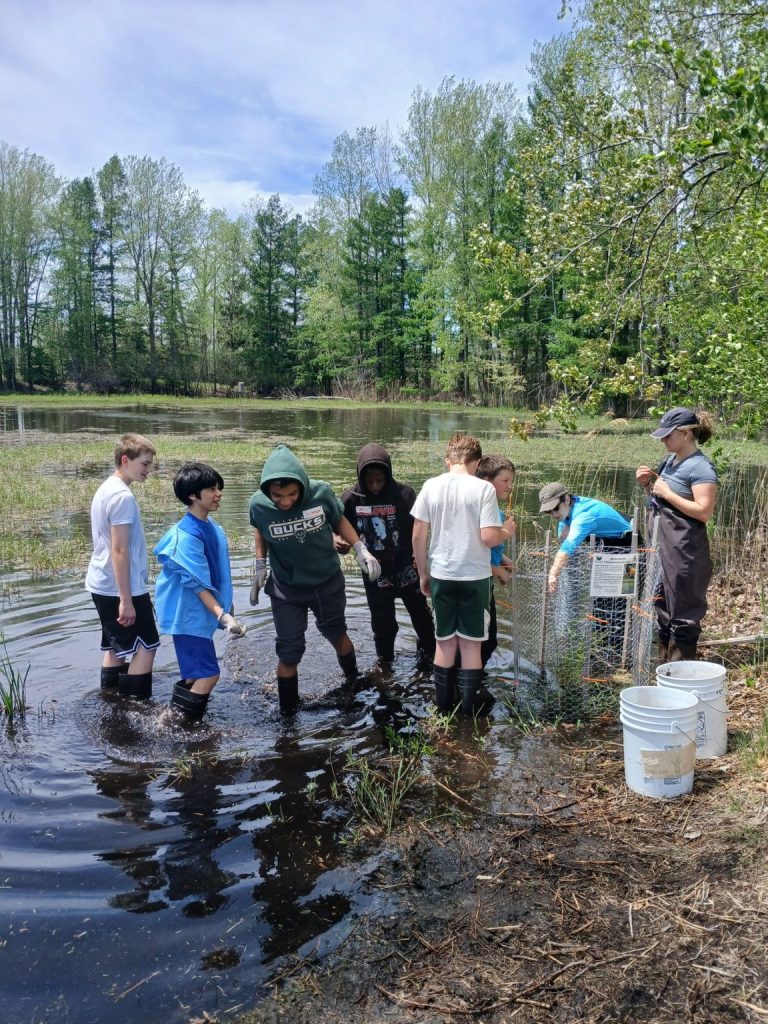Most days, you’ll find Amy Carrozzino-Lyon knee-deep in the soft shallows of the bay of Green Bay, scattering seeds of wild rice by hand. But what looks like a quiet act of restoration is, in truth, part of something far more powerful—a movement to restore not only wetlands, but connections: to the land, to tradition, and to one another.

A restoration scientist based at UW-Green Bay and an affiliate with the UW-Madison Division of Extension, Carrozzino-Lyon leads regional efforts to bring back native wild rice, or manoomin, to the west shore’s wetland habitats. Wild rice doesn’t just stabilize shorelines and filter water—it holds deep cultural, spiritual, and dietary importance to Indigenous people across Wisconsin. Guided by this understanding, Carrozzino-Lyon sees the return of wild rice as a reconnection with centuries-old stewardship.
“We as humans are part of the ecological community that we steward and we have connections with the natural world that are both deeply profound and personal,” notes Carrozzino-Lyon. “For example, from a western point of view, wild rice is an important native wetland plant that occurred historically in the Green Bay ecosystem and has significant value for wildlife and fish. For the Menominee and Ojibwe communities, wild rice is more than a plant, she is their relative who is part of their way of life and continues to provide critical sustenance to their people.”
This perspective took root during her Ph.D. studies, where she explored the human dimensions of wildlife and natural resource management. It was a turning point.

“The human side of conservation often gets overlooked,” she reflects. “But whether you’re managing wildlife or planting wild rice, human values are always part of the process. Understanding that helps make the work more meaningful—and more successful.”
Today, her programs serve as both restoration and education initiatives. Through UW Extension and partnerships with educators, Amy brings wetland restoration programming to a diverse range of students, including K-12, undergraduate, and graduate students. As part of the Wild Rice in the Classroom program, educators receive supplies and wild rice seed to grow seedlings indoors before planting them in suitable wetlands—transforming science lessons into acts of community-powered conservation.
“We provide the supplies and the instructions to educators to grow wild rice in small environments indoors as a learning opportunity. But we are not trying to cultivate rice; we are trying to contribute to restoration efforts to bring it back to these landscapes while providing learning experiences for students and educators to connect with the environment around them,” notes Carrozzino-Lyon.”
Each year, Carrozzino-Lyon engages dozens of educators and hundreds of students through field trips, restoration events, and collaborative projects. In 2025, over 20 educators participated in wild rice programming with a reach of nearly 1,000 K-12 students in the classroom and 200 students who attended spring outdoor field trips. She also leads field tours of restoration sites and convenes cross-sector conservation partnerships that drive funding and shape the direction of regional wetland restoration work on the Green Bay west shore.
Carrozzino-Lyon was recently recognized as a 2025 Lake Michigan Champions of Conservation for this work, with the Lakeshore Natural Resource Partnership noting not only her work as an educator and researcher, but also as a mentor whose collaborative work bridges Indigenous knowledge, ecological science, and community outreach.

Indeed, former undergraduate research assistant, Fiona Crowley-Oswald, credits Carrozzino-Lyon with sparking a passion for aquatic ecosystems that’s now shaping her environmental career.
“Observing the rice’s life cycle and reseeding wetlands so it has the best chance at life for years to come made me feel like we were making a difference. I feel grateful to have had such a meaningful experience, one that helped expand my interest in aquatic restoration and guided the next steps in my career,” recalls Crowley-Oswald.
Whether she’s wading through wetlands or collaborating with partners, Carrozzino-Lyon’s work reflects a deeper commitment to conservation—one that supports healthy ecosystems, fosters learning, and centers cultural respect in every step forward.




